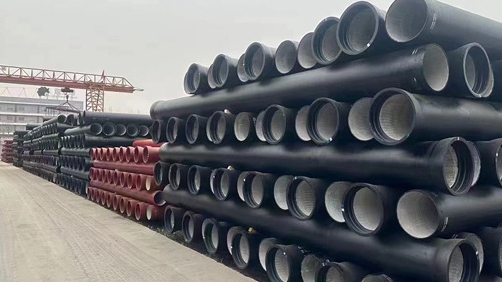ISO 2531 Explained: Complete Technical Guide for Ductile Iron Pipes in Water Supply Systems
2025-08-18 10:56:31 hits:0
1. Standard Positioning and Technical Evolution
ISO 2531 is the core international standard for ductile iron pipes for water conveyance developed by the International Organization for Standardization (ISO), under the jurisdiction of ISO/TC 5 (Black Metal Pipes Committee). The latest version has replaced the 1998 fifth edition, with key technical features including:
2. Core Technical Parameter Requirements
1. Material and Mechanical Properties
2. Dimensions and Tolerances
| Parameter | Technical Requirements |
|---|---|
| Outer Diameter (DE) | Positive tolerance of +1mm; Ovality: Within tolerance for DN40-200, ≤1% for DN250-600, ≤2% for DN>600 |
| Wall Thickness Calculation | Minimum wall thickness formula: a = PA×3×Y / (2×420 + PA×3) (PA = PFA value); Minimum wall thickness of centrifugally cast pipes ≥ 6mm |
3. Pressure Ratings and Test Standards
| C Grade | Permitted Working Pressure (PFA) | Maximum Working Pressure (PMA) | Field Test Pressure (PEA) |
|---|---|---|---|
| C25 | 25 bar | 30 bar (1.2×PFA) | 35 bar (1.2×PFA + 5) |
| C40 | 40 bar | 48 bar | 53 bar |
3. Technical Specifications for Fittings and Joints
1. Fitting Classification
2. Joint Sealing Requirements
4. Coating and Anti-Corrosion Systems
1. External Protective Coatings
| Coating Type | Standard Reference | Technical Indicators | Application Scenarios |
|---|---|---|---|
| Metallic Zinc Spraying | ISO 8179-1 | Zinc layer ≥ 130g/m², local ≥ 110g/m² | Medium corrosive soil |
| Zinc-Rich Paint | ISO 8179-2 | Dry film zinc content ≥ 85% | Low-corrosion environments |
| Polyethylene Sleeving | ISO 8180 | Thickness 0.5-1.0mm | Chemical industrial zones, high-salinity soil |
2. Internal Lining Requirements
5. Quality Control and Engineering Application
1. Testing Requirements
2. Engineering Application Specifications
6. Industry Trends and Standard Value
ISO 2531 establishes a water pipeline safety system through material standardization (graphite spheroidization rate ≥ 80%) and mechanical modeling (wall thickness formula). Combined with intelligent monitoring and eco-friendly material applications, it continues to lead technological development in water supply infrastructure.
Blog Author Profile
DAWN | Pig Iron & Castings Procurement Advisor 18 years in the foundry trenches give me an edge: I know how pig iron’s chemistry impacts casting quality and can troubleshoot defects like cracks and porosity. With a 1M MT/year pig iron and 60k MT/year casting output from our in-house factory, plus 200+ verified suppliers on our platform, we offer fast price comparisons. Expect a 24-hour inquiry response—my goal? Not just closing deals, but being your go-to partner in the foundry world.
18 years in the foundry trenches give me an edge: I know how pig iron’s chemistry impacts casting quality and can troubleshoot defects like cracks and porosity. With a 1M MT/year pig iron and 60k MT/year casting output from our in-house factory, plus 200+ verified suppliers on our platform, we offer fast price comparisons. Expect a 24-hour inquiry response—my goal? Not just closing deals, but being your go-to partner in the foundry world.

 en
en  fra
fra  de
de  ru
ru  ara
ara  gle
gle  it
it  jp
jp  kor
kor  th
th  zh
zh 



